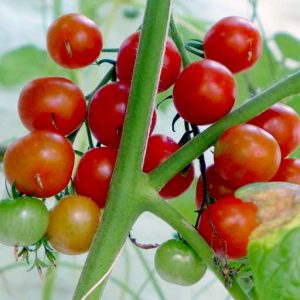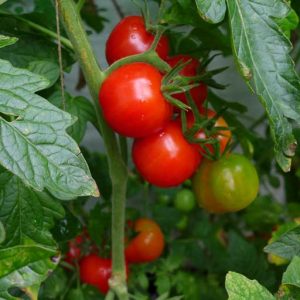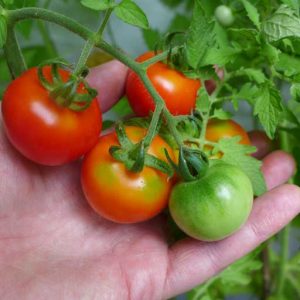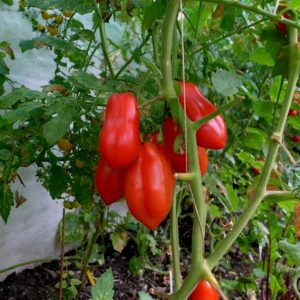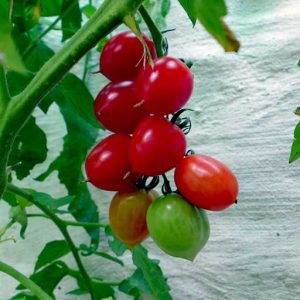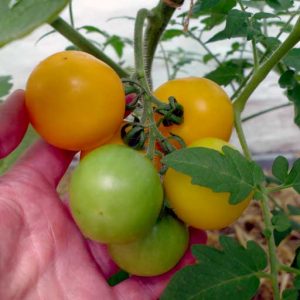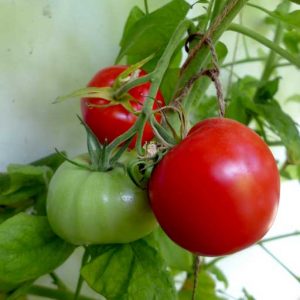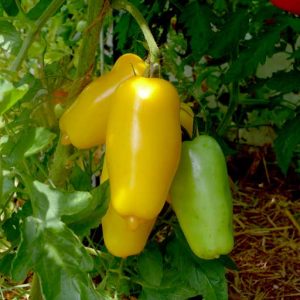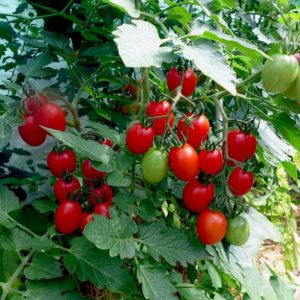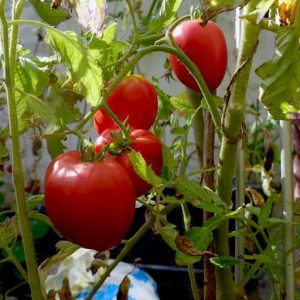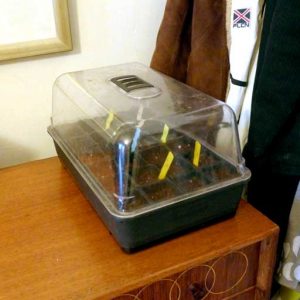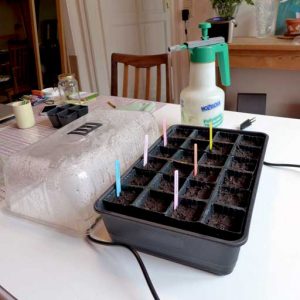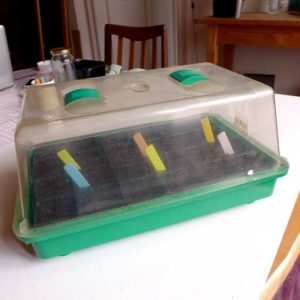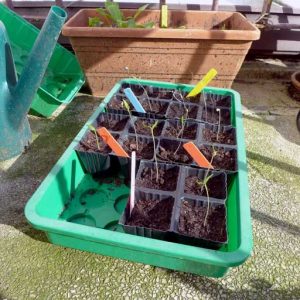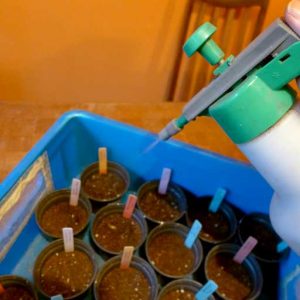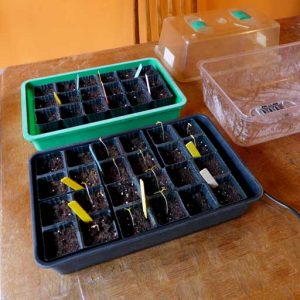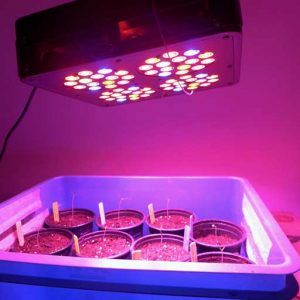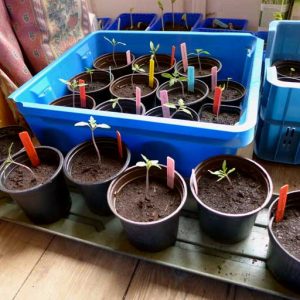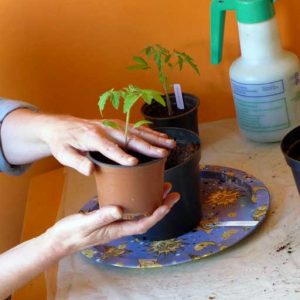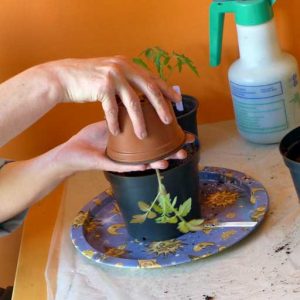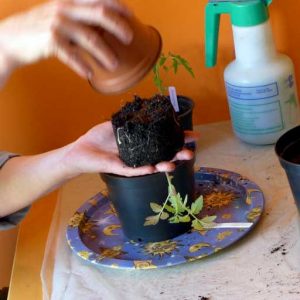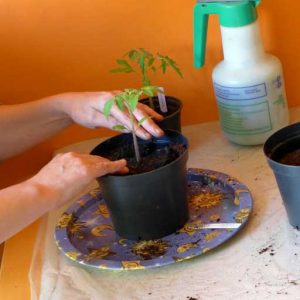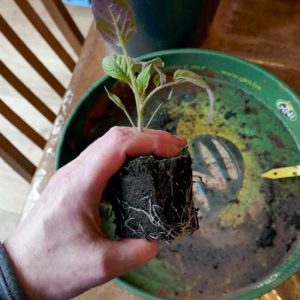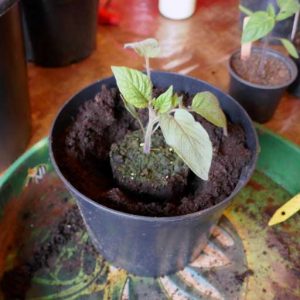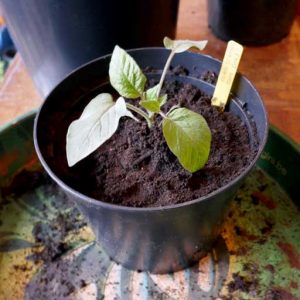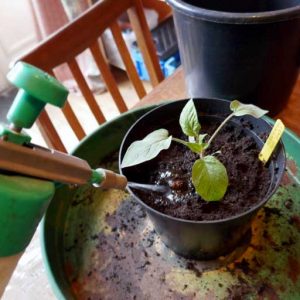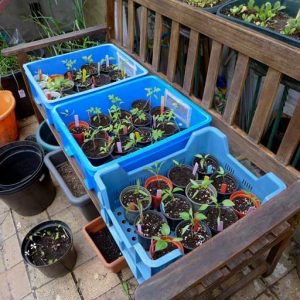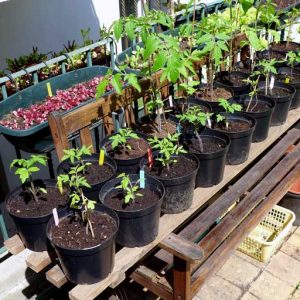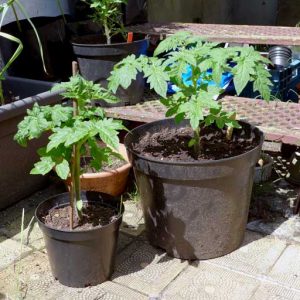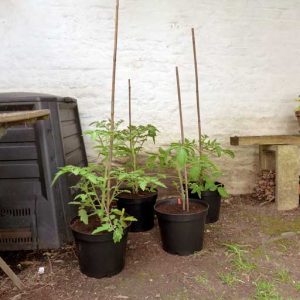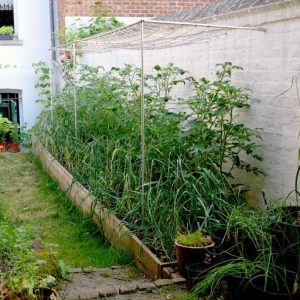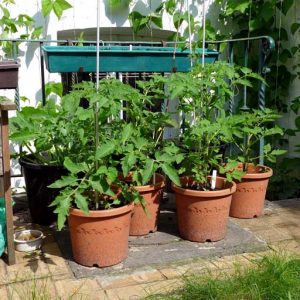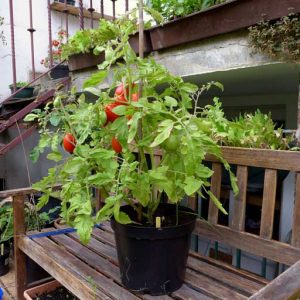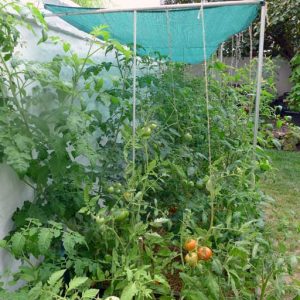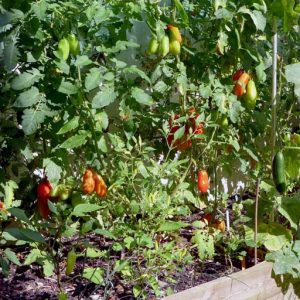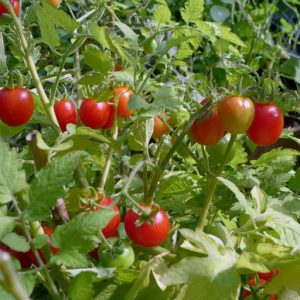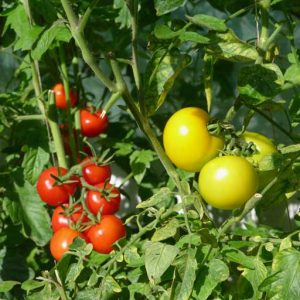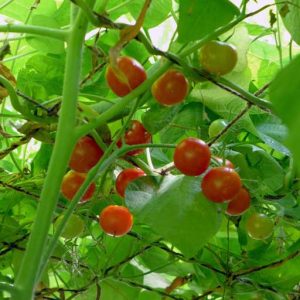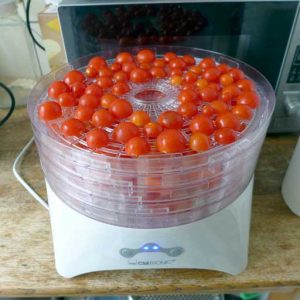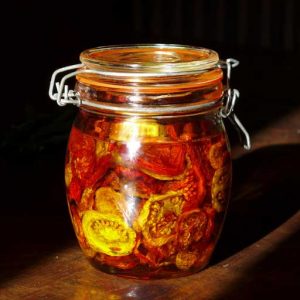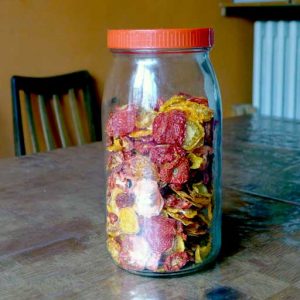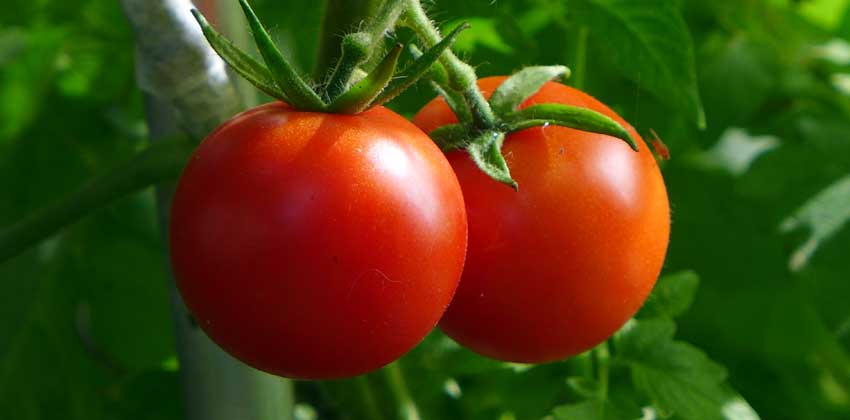
Cities are ideal places for growing tomatoes. Tomatoes require relatively little space, can be grown in soil beds or containers and thrive when attached to walls and structures. They can grow down the way (tumbling toms), as pot plants, small bushes or as large vines stretching 4-6 metres.
The scientific name for the tomato is Lycopersicon lycopersicum which means “wolf peach”. It is a native of the Peru, Bolivia and Ecuador area of the Andes Mountains in South America. The tomato was brought to Europe by the Spanish where today some of the best varieties are continued in Italia, Spain and France.
The tomato is a perennial plant in the tropics but in northern climates it is grown as an annual. Botanically speaking, the tomato you eat is a fruit, horticulturally speaking, it is a vegetable plant. This causes some confusion.
Tomatoes can be divided into two types, determinate and indeterminate. The determinate tomato plant stops growing around 1 metre in height. When flowers blossom at the tips of the branches, the plant has reached its full height. The fruit of a determinate tomato plant ripens all at once.
Indeterminate tomatoes grow indefinitely. Depending on the variety, they can grow from 1-3 metres tall. This type continues to produce tomatoes throughout the growing season until the temperature falls. These plants provide a continuous harvest
Tomatoes are grown worldwide from thousands of cultivars selected for varying fruit types and for optimum growth in differing growing conditions. Hybrid varieties dominate commercial production because of their heavy cropping and predictable growth patterns. Heirloom or organic tomatoes are increasingly preferred by gardeners and those seeking more natural and unusual flavours.
Tomato cultivars vary widely in their resistance to disease. Modern hybrid varieties are designed for increased disease resistance but often require treatments and feeds to produce. Proponents of heirloom tomatoes prefer the natural resilience of organic production methods including companion planting and integrated pest management over chemical inputs.
Growing tomatoes in cities has the unexpected advantage of avoiding a number of pest and disease problems that are encountered in rural areas.
Tomatoes are rapid growing with a growing period of 60 to 150 days. Optimum daily temperature for growth is 18 to 25oC with night temperatures between 10 and 20oC. As high humidity leads to a greater incidence of pests, diseases and fruit rotting, a dry climates is preferred for tomato production (which Belgium is not). Shelter from wind is important generally but in humid conditions good airflow around the plant is important to prevent disease.
Tomatoes can be grown on a wide range of soils but a well-drained, light loam soil with pH of 5 to 7 is preferred. Tomatoes (indeterminate) have a fairly deep root system which penetrates up to 1. 5 m in soil. Tomatoes grown in containers should have a minimum 500mm depth of a rich light soil medium.
Highest yields of tomatoes are obtained by frequent, light irrigation. Crop performance is very sensitive to the irrigation practice with the highest demand during the flowering stage. The plant produces flowers from bottom to top during the active development of the stem. Fruits can be harvested while the plant is still flowering at the top. Some times three flowering periods related to three harvests can be distinguished.
Practical Growing
Early start. Start tomatoes from seed in pots or trays indoors at least 3-4 weeks before the last frost date (mid March in Belgium). Seedlings should be “potted up” from trays to individual posts while indoors. When the risk of frost has passed, they should be about 300mm high.
See article Getting Started: Growing From Seed
Hardening Off
Young plants should be “hardened off” with daily visits outside and returned indoors at night. Weather has to be watched carefully as any sudden cold can kill seedlings. As part of hardening off, seedlings can eventually be left out over-night on mild nights, covered with plastic or under glass. If in doubt about temperature keep the seedlings warm (one cold night can kill everything).
Preparing Soil
When the chance of frost is gone, prepare the soil bed by mixing good compost into the soil where the seedling is to be situated. Dig the hole for the seedling and fill the bottom with compost of varying size and decomposition stages. Cover this organic matter with a thin layer of soil to protect tomato roots then place seedling in the hole. Gently pack in soil around seedling so tomato stem is slightly deeper planted. Roots will sprout all along the buried stem to make a stronger plant.
Watering
At the seedling stage, water the soil thoroughly ensuring everything is properly soaked. As the seedling settles in continue regular watering as this will encourage a strong and deep root system. Do not flood or water-log but maintain a moist soil. If irrigation systems are to be used (soaker hose or drip line) these should be situated before planting.
Tomatoes need at least one inch of rain or irrigation water per week for steady growth. For a soil bed (5 metres x 1 metre) this amounts to about 40 gallons over the growing season. This amount is very weather sensitive (more when dry / less when wet) and can be improved by using irrigation systems.
Tomatoes like moisture, but overwatering is harmful. A thorough soaking every four to five days on light, sandy soils and every seven to ten days on heavy soils is a good general rule for watering during dry times.
As tomatoes require steady moisture, growing them in soil beds is more reliable than in containers or pots because the beds hold moisture better. Maintaining moisture levels in containers over a growing season requires daily monitoring and can require watering twice a day during warm spells.
Supporting Plants
Most tomato varieties require some form of support. It is best to introduce a first support at the time of planting out to avoid root damage later. Using thin aluminium rods, wood or plastic (8mm thickness / 500mm height) works well for the early stages of growth. When planting tomatoes the eventual spread of the plant should be considered and the form of support that will be required for the finished plant. This can be longer canes (up to 2 metres) or string to a high point or frame.
Some believe that tomato plants should be pruned after the first tomatoes appear. This is a commercial practice suited to intensive greenhouse production. In a garden using heirloom plants this should be kept to a minimum, especially if the garden is prone to damp as plant wounds can be an entry point for infection.
Standard-sized tomatoes take 20 to 30 days from blossom set to reach their full size – commonly called “mature green.” They can take another 20 to 30 days to ripen and change colour. Picking fruit as soon as it starts to show colour will allow other fruit on the vine to gain size and colour more quickly. Once a mature green tomato has begun to blush or turn colour it can be brought to full colour off the vine at room temperature.
Tomatoes are an excellent crop for city growing, especially when grouping various heirloom varieties for texture and colour and combining them with varieties of beans and cucumber in the garden. With even a small garden a sufficient crop can be achieved to meet household needs over several months.
-

Kiss Bush Tomato
€0.00 View On Original Site -
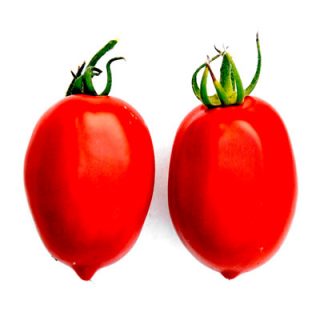
Martin Amish Bush Tomato
€0.00 View On Original Site -
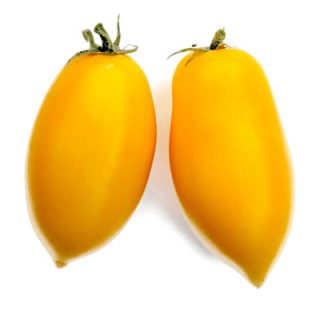
Roman Candle Tomato
€0.00 View On Original Site -
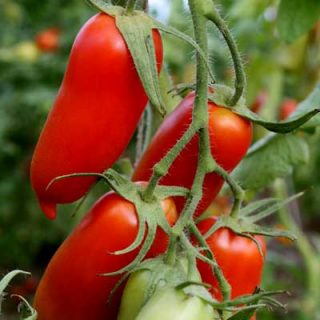
Tomato Agro F1
€0.00 View On Original Site -
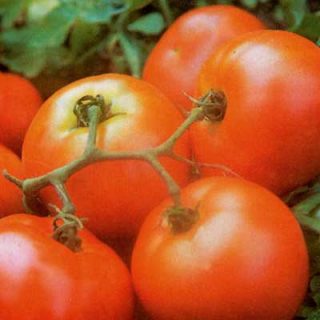
Tomato Ailsa Craig
€0.00 View On Original Site -
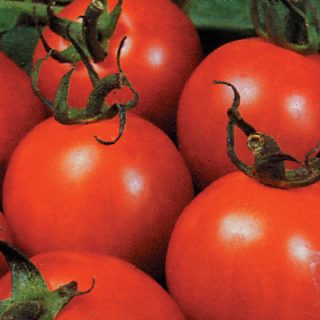
Tomato Alicante
€0.00 View On Original Site -
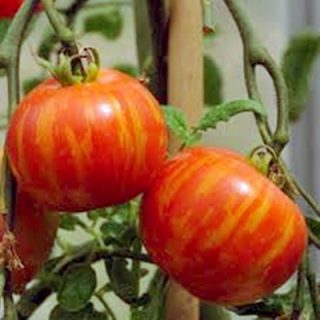
Tomato Amurskiy Tigr
€0.00 View On Original Site -
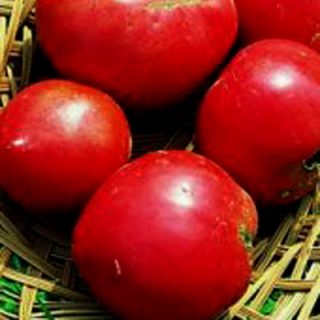
Tomato Anna Russian
€0.00 View On Original Site
